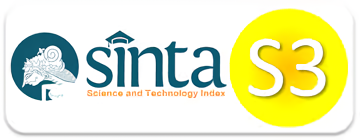The Effect of Electronic Word of Mouth, Destination Image on Tourist Visiting Decisions at Nagari Tuo Pariangan Tourism Object
Downloads
Background: Tourism at this time has become one of the critical needs for most people, this can be seen from the increased interest in tourism which is side by side with digital promotion through EWOM in the tourism sector which is rampant on social media. With the high intensity of internet use, especially on social media platforms, making digital promotions through social media provides excellent tourism marketing opportunities.
Objective: This study aims to analyze the effect of electronic word of mouth and destination image on the decision to visit tourists at the Nagari Tuo Pariangan tourist attraction.
Method: The data used in this study were obtained from primary data and secondary data. The data analysis method used is descriptive analysis and SEM-PLS analysis with a sample of 130 respondents, using a non-probability sampling method.
Results: The results of this study indicate that electronic word of mouth has a positive and significant effect on destination image, destination image has a positive and significant effect on visiting decisions, and electronic word of mouth has a positive but not significant effect on visiting decisions. However, there are mediating variables that can influence.
Conclusion: The results of the SEM-PLS analysis also show a positive and significant effect between the electronic word-of-mouth variables on the destination image and decision visit.
Keywords: destination image; electronic word of mouth; the decision to visit; SEM-PLS
Copyright (c) 2023 Yomi Satifa Putri

This work is licensed under a Creative Commons Attribution-NonCommercial-ShareAlike 4.0 International License.
Copyright notice:
- Authors retain copyright and grant the journal right of first publication with the work simultaneously licensed under a Creative Commons Attribution-NonCommercial-ShareAlike 4.0 International License that allows others to share the work with an acknowledgement of the work's authorship and initial publication in this journal.
- Authors are able to enter into separate, additional contractual arrangements for the non-exclusive distribution of the journal's published version of the work with an acknowledgement of its initial publication in this journal.
- Authors are permitted and encouraged to post their work online (e.g., in institutional repositories or on their website) prior to and during the submission process, as it can lead to productive exchanges, as well as earlier and greater citation of published work (See The Effect of Open Access)
















